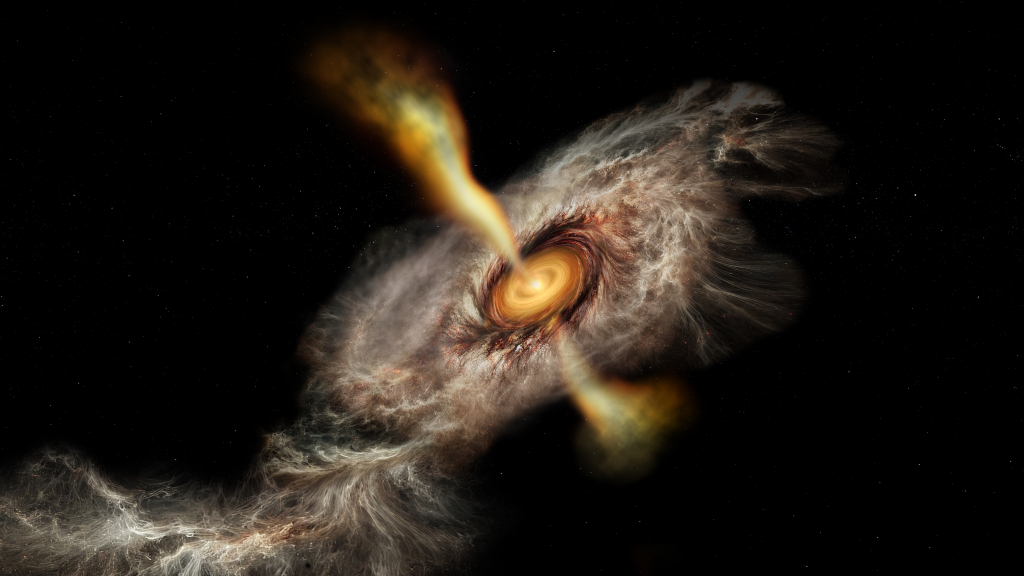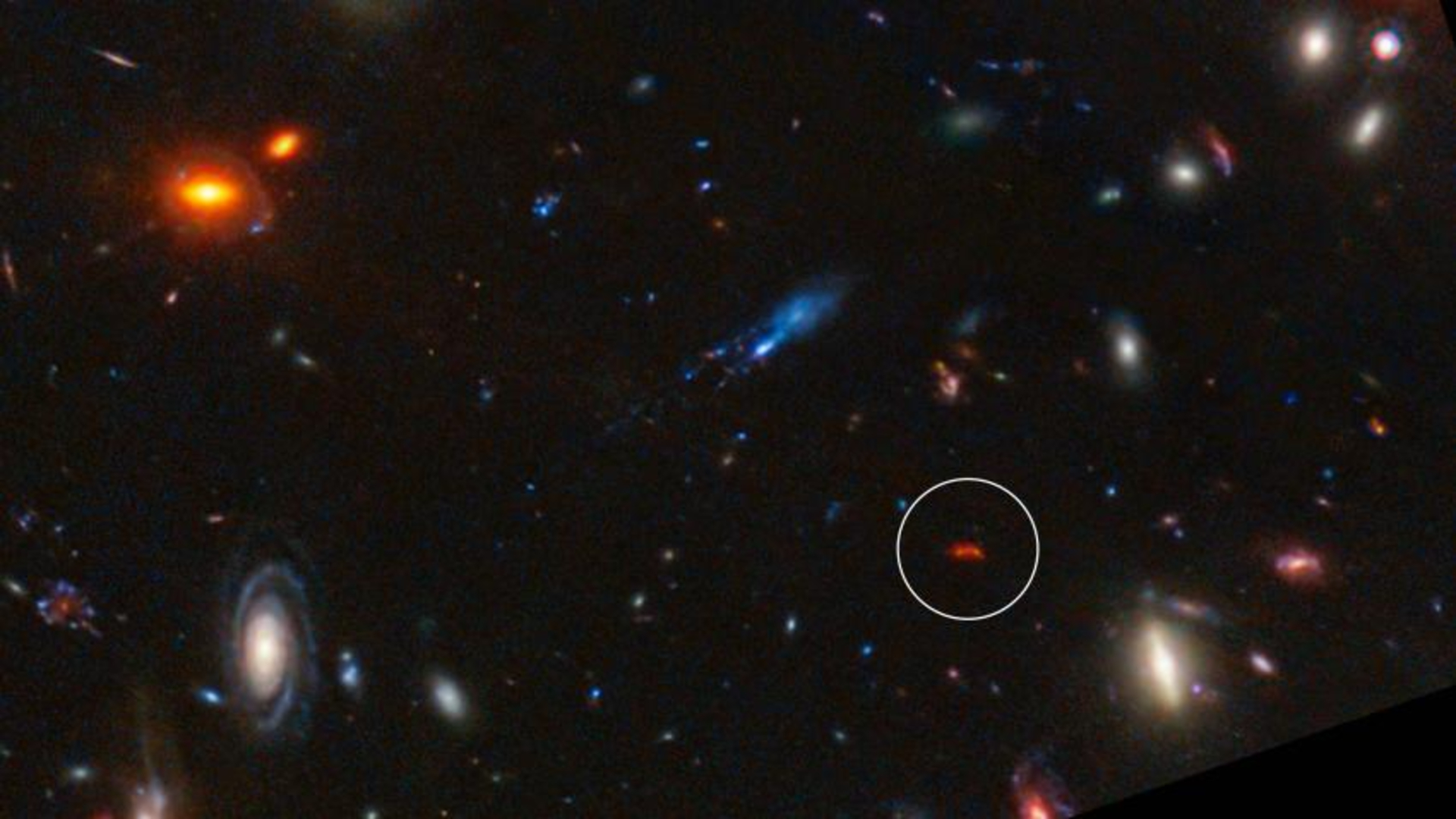Giant young star is growing by 2 Jupiter masses every year, new study shows
"We need to understand for how long HW2 can keep growing."

Astronomers have captured the clearest view to date of a massive young star gulping down swirling gas, offering a rare glimpse into how these cosmic titans grow to their enormous sizes.
The star in the making, known as HW2, is about 10 to 20 times as massive as our sun and lies about 2,300 light-years from Earth, in the heart of a star-forming region called Cepheus A. Despite the thick shrouds of dust that usually obscure such regions, researchers managed to peer through the veil surrounding HW2 and study the gas feeding its rapid growth.
Using radio observations of ammonia, a molecule abundant in interstellar space and familiar on Earth as a common cleaning agent, astronomers mapped the rotating disk of gas and dust swirling around HW2.
The results, soon to be published in the journal Astronomy & Astrophysics, confirm that colossal stars that are hundreds of times the mass of our sun grow in the same fundamental way as smaller stars: by gathering gas from swirling gas disks.
"We are always trying to get general rules that can explain the largest number of phenomena we observe," study leader Alberto Sanna, a researcher at the National Institute for Astrophysics in Italy, told Space.com. "Our findings strongly support that the same physical processes, although scaled up, can form both stars like our sun as well as stars of tens of solar masses."
The team made their observations in 2019 using the Very Large Array radio telescope network in New Mexico. By tracking the signature of ammonia molecules, which glow brightly at radio wavelengths, the researchers were able to peer through the dense cocoon of dust that obscures visible light and "look as close as possible to the star," said Sanna.
The data revealed that gas from HW2's accretion disk is collapsing inward at breakneck speed, feeding the star at an astonishing rate — equivalent to about two Jupiter masses per year, one of the highest stellar growth rates ever recorded.
Breaking space news, the latest updates on rocket launches, skywatching events and more!
How HW2's evolution unfolds will depend in part on what's happening in its immediate environment, said Sanna. The team's observations show a clear imbalance in the gas distribution within the star's accretion disk: the eastern side contains roughly twice as much gas as the western side and also shows signs of greater turbulence.
This asymmetry suggests the disk may be receiving an external injection of material, potentially funneled in by a nearby filament-like stream of gas and dust, according to the new study.
This interpretation supports growing evidence that such streamers can connect young stars to their surrounding envelopes, acting as cosmic supply lines and delivering fresh material to the accretion disk to sustain star growth.
Sanna and his team cannot yet directly image these streamers that may be feeding HW2, but the new study offers testable predictions that future observations can use to search for them, the researcher said.
"We need to understand for how long HW2 can keep growing," he added.

Sharmila Kuthunur is an independent space journalist based in Bengaluru, India. Her work has also appeared in Scientific American, Science, Astronomy and Live Science, among other publications. She holds a master's degree in journalism from Northeastern University in Boston.
You must confirm your public display name before commenting
Please logout and then login again, you will then be prompted to enter your display name.
